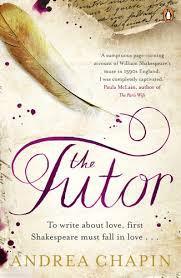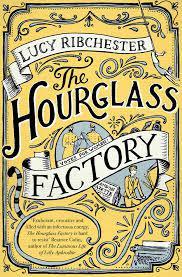I have been such a bad blogger lately and I do apologize. I just have too much on at the moment, and when something has to give, it has to be the least work-related activity. Also, the last couple of months I’ve reviewed books a lot less here in order to write reviews for Shiny New Books. Instead, I’ve enjoyed writing more personal pieces on this blog. However, there are plenty of weeks – and I call them good weeks – when nothing much happens of interest to tell you about. Having just written that, I should confess that I was at the Cambridge literary festival on the weekend, which theoretically is a good blogging topic but I can’t quite work the enthusiasm up for writing about it. It was good! Really, writers talked about their work, they were witty and clever, the audience enjoyed themselves. You get the picture.
Instead, let me tell you about a couple more of the books that didn’t quite make it into Shiny and my probably very contentious reasons for not putting them there: two historical novels from debut writers, The Tutor by Andrea Chapin and The Hourglass Factory by Lucy Ribchester.
Okay, so here’s a question: why set a novel in the past? Ostensibly there’s a simple answer to that – Andrea Chapin is writing about a part of Shakespeare’s life for which there is no actual historical record, Lucy Ribchester about the Suffragettes. Historical characters, in other words, for whom we still have a measure of curiosity. But I found myself wondering about the heroines of these novels and the role they served.


Both of these novels are very well-written and carefully plotted with swooping stories. They’ve got everything: corpses, love affairs, mysteries, famous figures from the past, exotic locations. They have, in other words, a wholly 21st century mentality, nowhere more evident than in their female heroines who rush into the heart of the action without a backward glance.
So I get it; a lot of readers find it hard to forgive the past for its ideologies and don’t want to read about the sort of mindset women of those ages might likely have had. But why, in that case, write historical fiction employing such 21st century characters? Why not place them where they belong, in the current day? And weirdly, what’s the trend in popular contemporary novels but women struggling against their own weakness and dissolution, like the dreadful The Girl on the Train. If we still like the women-in-peril novel, if we are fascinated by women as their own worst enemies, why are we so insistent that women in the past should behave with autonomy and ambition? Is it only me who thinks that odd?
For my money, the only reason to write about the past is to inhabit the strange otherness of the past, the way it differed so profoundly from life as we know it. And for sure, we see that in the backdrop of both of these novels. Are we to think, then, that history is only used as intriguing scenery? A particularly attractive backcloth? If I go down this track, then I become cynical. Are authors latching onto these famous names – Shakespeare, the Suffragettes – just because they will sell? The reader gets a little bit of a history lesson from the details, and can enjoy a rambunctious story with lots of strong characters?
It’s the current style, and I am out of step. But in my heart, I find myself uneasy with this sort of falsification of history. This is not how it was. And it’s important we remember how it was, the reasons human beings chose eventually to live and think differently and the reasons why we do not wish to go back to those old habits. The past was not a nice place and women certainly did not think as if they were free. And the world today is not a nice place, with all sorts of self-serving ideologies still doing the rounds and holding us hostage. I hope future writers will not spare us by prettying it up and pretending we valiantly rose above it all.
In all fairness, Lucy Ribchester does give a very vivid portrait of what Suffragettes went through at the hands of the police and the jailors and Andrea Chapin makes it clear how brutal persecution of Catholics was in the time of Queen Elizabeth I. As I said, they are very good books on their own terms, with a lot of verve and color. You will probably enjoy them! You should certainly try them to see what you think.
